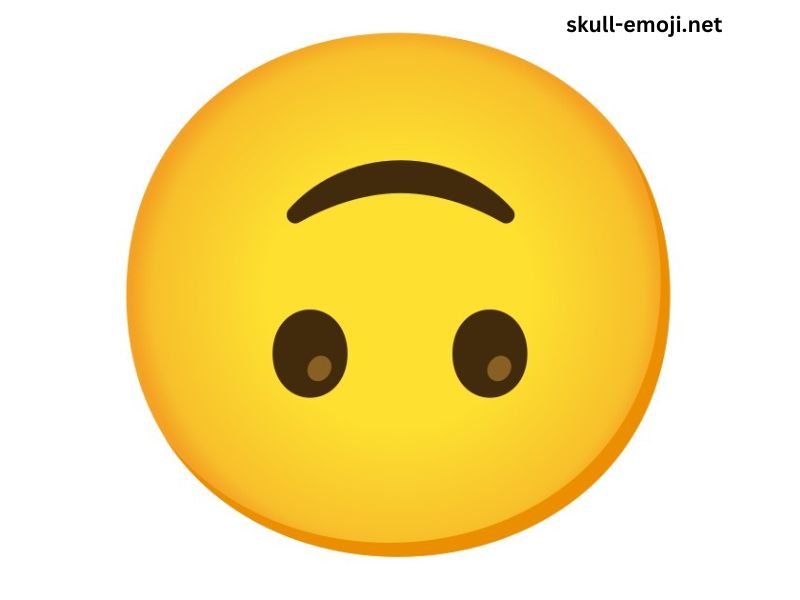In the world of digital communication, emojis have become a vital part of how we express ourselves. Among the myriad of emojis available, the upside down smiley face (🙃) has emerged as a curious symbol that often puzzles users. What does it mean? When should it be used? And why has it garnered such popularity? In this article, we will delve into the meaning of the upside down smiley face, its context in communication, and its broader implications in modern culture.
The Basics of the Upside Down Smiley Face
The upside down smiley face emoji, often referred to simply as the “upside down face,” is characterized by a simple smiley face that has been flipped upside down. Its design features two eyes that are typically round and a mouth that forms a gentle smile, albeit inverted. While it may seem playful at first glance, its meaning can vary significantly based on context.
Origins and Popularity
The use of the upside down smiley face gained traction with the rise of instant messaging and social media platforms. It can be traced back to early emoticons, where users created simple text representations of faces to convey emotions. The upside down face adds a layer of complexity to these emotions, representing feelings that might be ambiguous or sarcastic.
The emoji was officially added to the Unicode Standard in 2010, which further cemented its place in digital communication. Its inclusion in popular platforms like Apple, Android, and various social media sites made it accessible and widely used.
Emotional Nuances of the Upside Down Smiley Face
1. Sarcasm and Irony
One of the most common interpretations of the upside down smiley face is that it conveys sarcasm or irony. In conversations where someone may be stating something that is not entirely serious or may be contradictory, the upside down face serves as a cue that the statement should not be taken at face value.
For example, if someone texts, “I love waking up early for work! 🙃,” the upside down smiley indicates that the sentiment is insincere. This nuance helps convey a more playful tone and can lighten the mood in potentially serious discussions.
2. Playfulness
The upside down smiley face is often used in a playful manner. It can signify a sense of fun or a whimsical approach to a conversation. When used in contexts such as jokes, light-hearted banter, or teasing, it can enhance the playful nature of the interaction.
For instance, if friends are joking about a shared experience, one might say, “Remember that time we got lost? That was so fun! 🙃” Here, the emoji emphasizes the humorous take on an otherwise stressful situation.
3. Confusion or Ambiguity
Sometimes, the upside down smiley face is used to express confusion or ambiguity. When a situation is unclear, and the sender feels perplexed, this emoji can serve as a visual representation of their feelings. It suggests that things may not be straightforward, and the sender is grappling with mixed emotions.
For example, in response to a complicated situation, one might text, “I’m not sure what to think about this new policy 🙃.” This indicates that the sender feels a mix of confusion and uncertainty.
4. Resignation
In some instances, the upside down smiley can convey a sense of resignation. When a person feels overwhelmed or accepts a less-than-ideal situation, the emoji can reflect that acceptance. It implies that while the situation may not be great, the person is choosing to maintain a lighthearted attitude about it.
For example, someone might say, “Well, I guess I’ll just have to deal with this unexpected change 🙃.” Here, the emoji suggests that they are resigned to the situation but still trying to keep a positive outlook.
Cultural Impact and Evolution
The upside down smiley face has transcended mere digital communication; it has also influenced popular culture. From memes to TikTok videos, its meaning has evolved, becoming a symbol of a generation that values authenticity and the expression of complex emotions.
1. Memes and Internet Culture
In internet culture, the upside down smiley face has been incorporated into countless memes. It often represents feelings of confusion, absurdity, or even existential angst. This versatility allows users to apply the emoji in various scenarios, making it a staple in meme culture.
For instance, memes featuring the upside down smiley often highlight moments when things don’t go as planned or when life feels chaotic. This relatability resonates with many, making the emoji a way to articulate shared experiences of frustration and humor.
2. Generational Symbol
For younger generations, particularly Gen Z and millennials, the upside down smiley face has become a symbol of the complexities of modern life. It encapsulates the feeling of being simultaneously amused and bewildered by the world. This duality reflects a broader cultural trend where authenticity and vulnerability are valued.
The emoji’s usage often signifies a refusal to conform to traditional emotional expressions. Instead of straightforward happiness or sadness, it captures the messy, multifaceted nature of human emotions in contemporary life.
Practical Usage Guidelines
Understanding the nuances of the upside down smiley face can enhance your digital communication. Here are some practical guidelines for its effective use:
1. Consider the Context
Before using the upside down smiley, think about the context of your conversation. Is it light-hearted, sarcastic, or confusing? Ensuring the emoji aligns with the overall tone will prevent miscommunication.
2. Know Your Audience
Different people may interpret the upside down smiley in various ways. Familiarize yourself with your audience’s understanding of emojis. Friends may appreciate its playful use, while colleagues might find it inappropriate in professional settings.
3. Balance with Other Emojis
Using the upside down smiley in conjunction with other emojis can help clarify your message. Pairing it with a laughing emoji (😂) or a shrug (🤷) can provide additional context, reinforcing the playful or sarcastic tone.
Conclusion
The upside down smiley face emoji serves as a fascinating example of how digital communication can convey complex emotions. Its meanings—ranging from sarcasm and playfulness to confusion and resignation—highlight the nuanced nature of human interaction in the digital age. As emojis continue to evolve, the upside down smiley remains a beloved symbol, encapsulating the intricacies of modern life and the playful spirit of communication.
In a world where expressing feelings can sometimes feel daunting, the upside down smiley face offers a way to lighten the mood and embrace the unpredictability of our experiences. So, the next time you find yourself in a situation that feels a bit upside down, don’t hesitate to share a smile—or an upside down smile!



